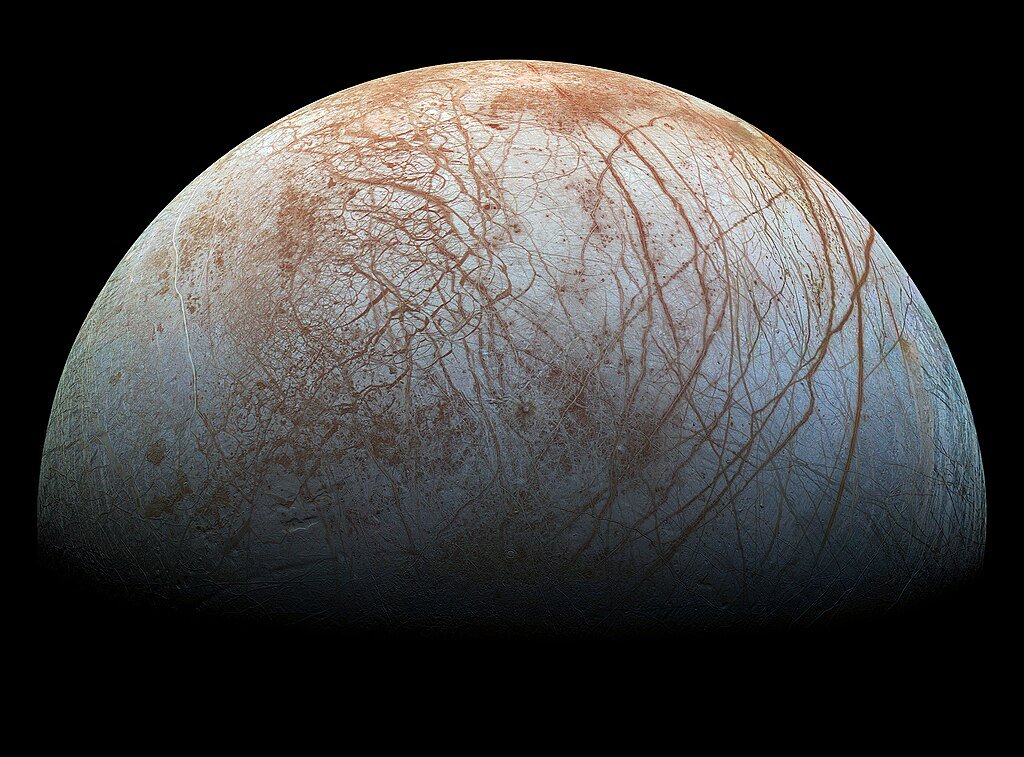Mercury’s moon Scientists have long been enthralled with Europa as one of the most likely locations to find life other than Earth. Now, ground-breaking James Webb Space Telescope (JWST) observations show that its icy surface is far more dynamic than first thought shifting, cracking, and recrystallizing in a few weeks. These quick changes imply that Europa is geologically active rather than merely a frozen wasteland, maybe driven by a concealed ocean under her shell. Under the direction of Dr. Ujjwal Raut of the Southwest Research Institute (SwRI), the most recent data questions accepted wisdom regarding Europa’s surface and deepens the riddle of what lurks beneath.
Europa’s Ice: A Tale of Two Structures
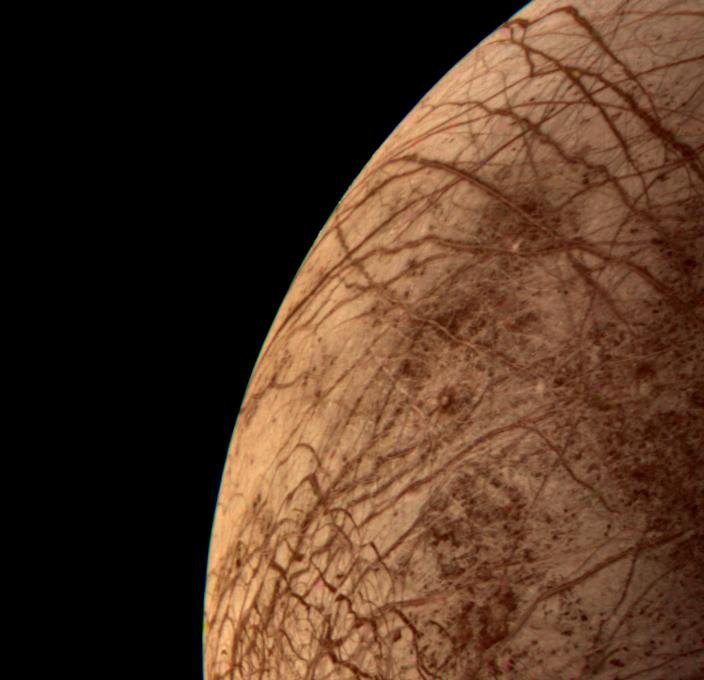
Water freezes on Earth into orderly hexagonal crystals that create glaciers and snowflakes as known here. But the ice of Europa is locked in a cosmic tug-of-war. The infrared spectroscopy of JWST revealed on the surface both crystalline ice (structured like Earth’s) coexistence and amorphous ice (a disordered, glass-like form). The rationale is Charged particles caught in Jupiter’s magnetic field bombard Europa and break crystalline ice into an amorphous form. Still, the fresh crystalline ice found particularly in areas like Tara Regio suggests an active resurfacing process, maybe from below.
One of the solar system’s most fast changing environments, Europa’s surface ice can change from crystalline to amorphous in as little as 15 days depending on radiation.
Chaos Terrains: Europa’s Geologic Hotspots
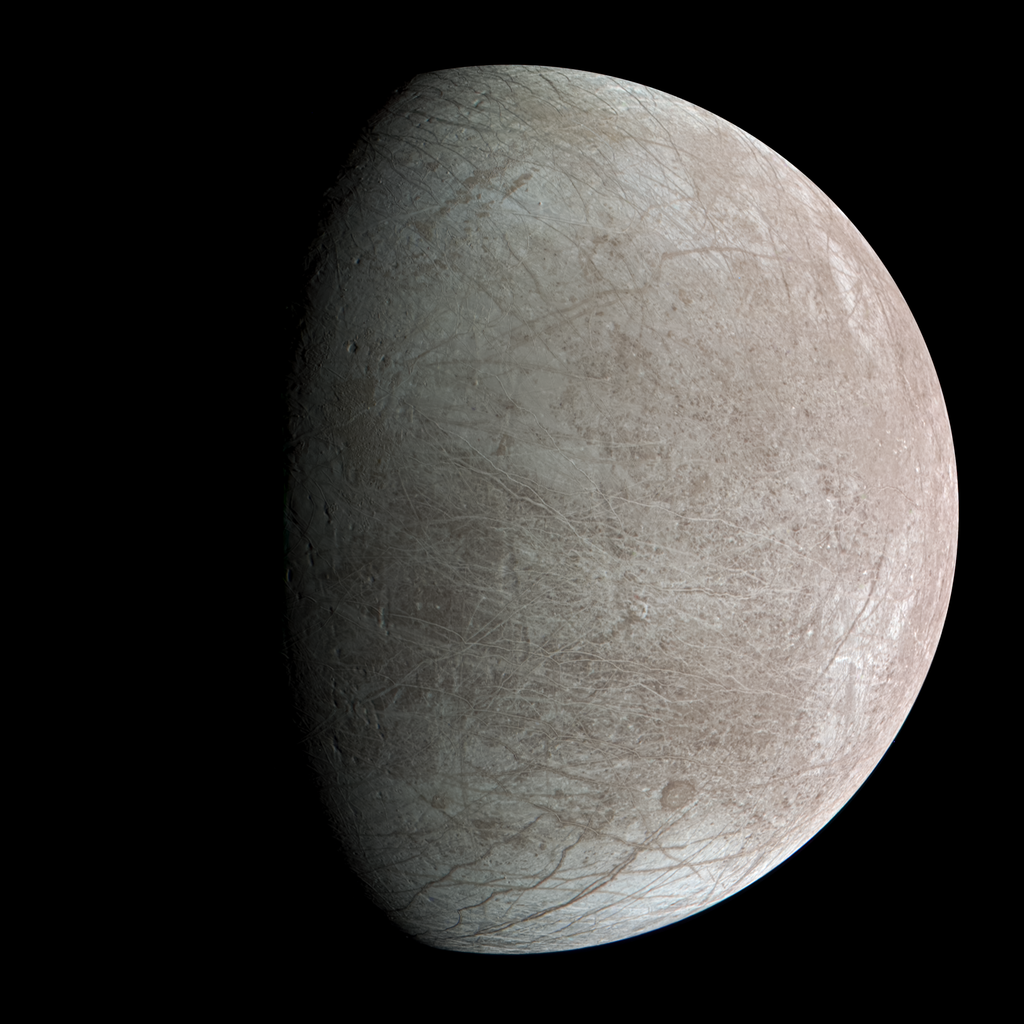
The most startling discoveries come from jumbled, fractured areas like Tara Regio where JWST found unusual chemistry. Here the ice is porous and warm enough to rapidly recrystallize, implying recent geologic activity. Even more fascinating, these sectors include:
- Probably from Europa’s subsurface ocean, sodium chloride, sometimes known as table salt.
- Perhaps resulting from microbial activity or water-rock interactions, CO₂ and hydrogen peroxide
- An odd mix of carbon isotopes (¹²CO₂ and ¹¹CO₂), with the heavier isotope pointing to an internal source.
These molecules may be chemical fingerprints of Europa’s ocean, expelled through plumes or cracks opening the tantalizing prospect of habitable conditions.
The Subsurface Ocean Connection
Scientists hypothesised decades ago that Europa has a global ocean under its ice, maintained liquid by tidal heating. The evidence of JWST supports this case:
- Surface CO₂ detected corresponds with expectations of material derived from oceans.
- Fractured ground points to “stovepipe-like” diapirs funneling warmer water upward.
- Like Enceladus, plumes could blast oceanic debris into space.
The team of Dr. Raut believes the ocean is buried under an icy shell geologically young no more than 180 million years old and lies 20 miles (30km).
Radiation vs. Renewal: Europa’s Surface Battle
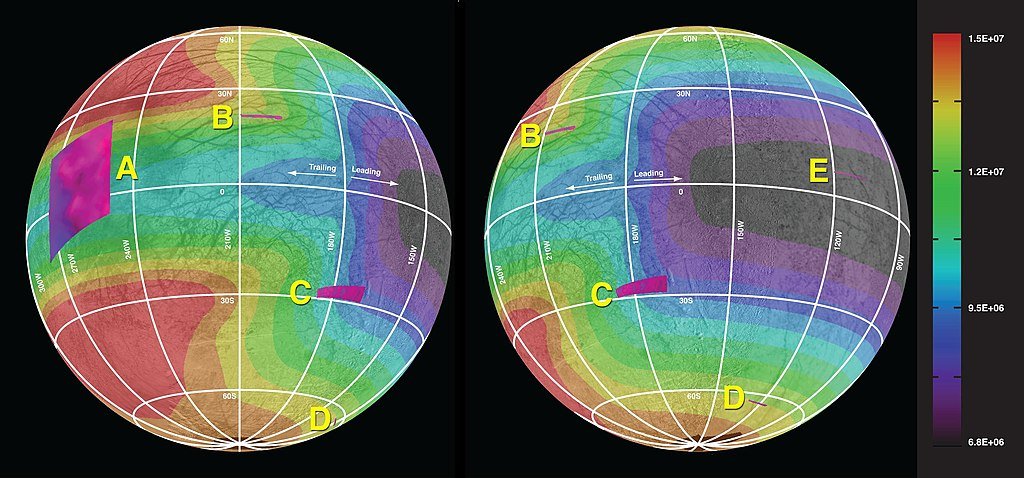
The surface of Europa presents a battlefield for two forces:
- Jupiter’s magnetic field accelerates particles blasting the ice, turning it amorphous.
- Tidal heating and perhaps cryovolcanism force fresh ice to the surface.
As so, A constantly shifting crust whereby some areas rejuvenate faster than radiation can corrupt them. This helps JWST to understand why she finds areas of pure ice among a radiation-battered wasteland.
What’s Next: Europa Clipper’s Mission
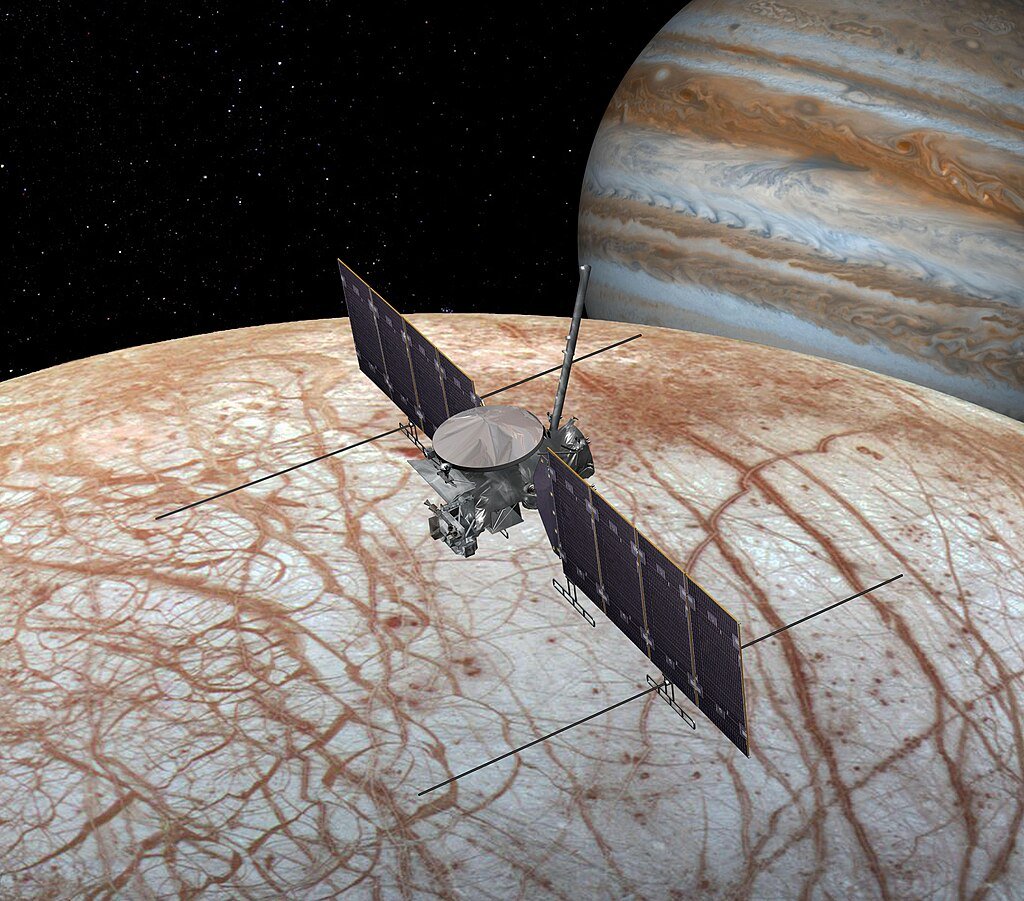
Scheduled to arrive at Jupiter in 2030, NASA’s Europa Clipper will investigate these mysteries up close. The spacecraft will:
- Perform 49 flybys, some as low as 16 miles (25 km) above the surface.
- Use ice-penetrating radar to map the ocean’s depth.
- Analyze plume material for organic molecules.
- Study the chaos terrains in unprecedented detail.
Expert Insight: “Europa’s ocean might have hydrothermal vents just like Earth’s that could support life,” says NASA’s Marshall Styczinski. “The oxidants on the surface and chemicals from the seafloor could be the perfect recipe”.
The Big Question: Could Europa Host Life?
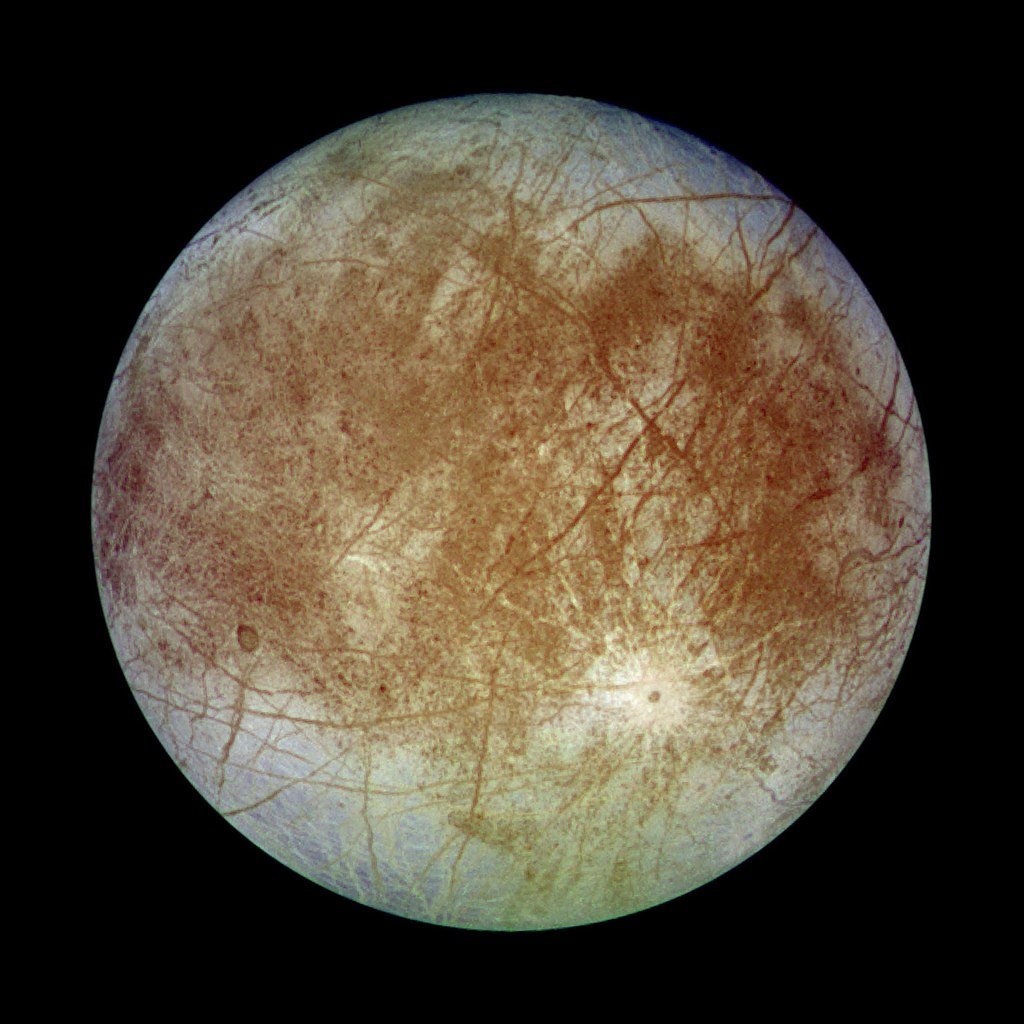
While JWST hasn’t found direct evidence of life, the clues are mounting:
- Liquid water? Almost certainly.
- Energy sources? Tidal heating and chemistry provide plenty.
- Organic molecules? Europa Clipper will hunt for them.
The discovery of hydrogen peroxide, a potential energy source for microbes adds another layer of intrigue. As Dr. Cartwright notes, “The chemistry in Tara Regio is really strange and exciting”.
Conclusion: A Living Moon?

Europa is no static ice ball. JWST’s observations paint a picture of a dynamic, geologically active world with a hidden ocean that may be interacting with the surface. Whether life exists there remains unknown, but with Europa Clipper en route, answers and perhaps even bigger surprises may be just a few years away.
Final Thought
If Europa’s ocean does harbor life, it would redefine our place in the cosmos. As Raut puts it, “Every road leads back to an internal origin.” The question now is: What’s waiting down there?
Sources:

Suhail Ahmed is a passionate digital professional and nature enthusiast with over 8 years of experience in content strategy, SEO, web development, and digital operations. Alongside his freelance journey, Suhail actively contributes to nature and wildlife platforms like Discover Wildlife, where he channels his curiosity for the planet into engaging, educational storytelling.
With a strong background in managing digital ecosystems — from ecommerce stores and WordPress websites to social media and automation — Suhail merges technical precision with creative insight. His content reflects a rare balance: SEO-friendly yet deeply human, data-informed yet emotionally resonant.
Driven by a love for discovery and storytelling, Suhail believes in using digital platforms to amplify causes that matter — especially those protecting Earth’s biodiversity and inspiring sustainable living. Whether he’s managing online projects or crafting wildlife content, his goal remains the same: to inform, inspire, and leave a positive digital footprint.

